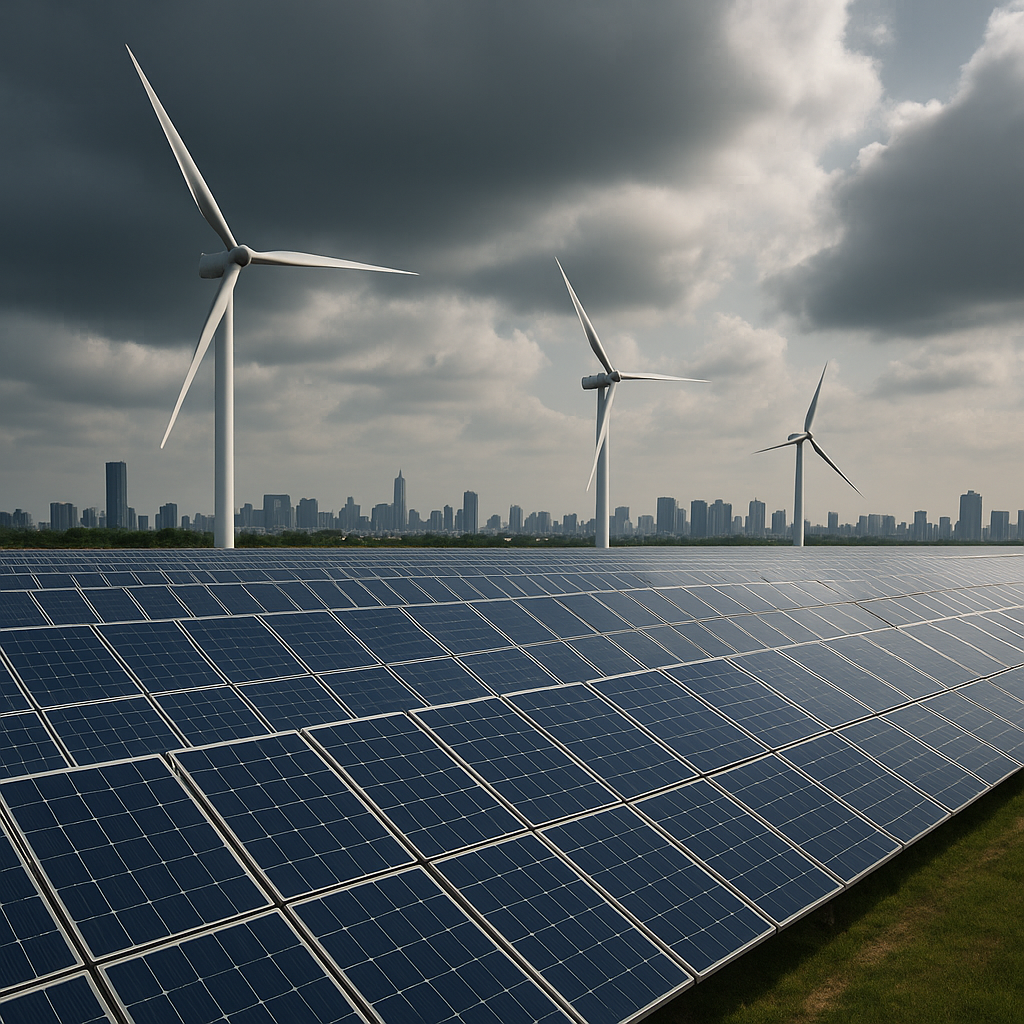Climate change weakens impact of green finance on energy efficiency
Green finance significantly promotes both structural transformation of the energy system and efficiency gains in energy use. By channeling capital toward renewable projects and low-carbon industries, green finance helps overcome traditional financing gaps that have long hindered clean energy deployment.

Green finance is a powerful force in driving the shift toward clean energy and sustainable industrial practices worldwide. However, its effectiveness is being challenged by the growing risks posed by climate change, according to a recent study published in Sustainability. The research explores how sustainable financing mechanisms influence energy structure and efficiency improvements, and how climate factors can moderate these effects
Based on extensive panel data across 30 Chinese provinces, the study "The Impact of Green Finance on Energy Transition Under Climate Change" evaluates how sustainable finance mechanisms accelerate energy transformation and how climate risks moderate their impact. The paper provides evidence that green finance is instrumental in pushing China toward its carbon neutrality goals, even as climate extremes threaten to undermine these efforts.
How does green finance accelerate the shift to clean energy?
Green finance significantly promotes both structural transformation of the energy system and efficiency gains in energy use. By channeling capital toward renewable projects and low-carbon industries, green finance helps overcome traditional financing gaps that have long hindered clean energy deployment.
According to the findings, a 1% increase in the green finance index leads to measurable improvements in both clean energy adoption and energy efficiency. This influence stems from financial incentives such as preferential loans, subsidies, and targeted investments that make renewable technologies more accessible and competitive.
The researchers also point out that the dual approach of increasing renewable energy share while upgrading energy efficiency forms the cornerstone of China’s transition strategy. Green loans, green bonds, and insurance products are facilitating this shift by mitigating risks associated with capital-intensive renewable projects. Moreover, these financial mechanisms are supporting the development of smart grids, advanced storage solutions, and other innovations essential for integrating clean energy into the national grid.
What mechanisms link finance, innovation, and industrial transformation?
The study reveals that green finance drives energy transition through two primary pathways: technological innovation and industrial restructuring. The availability of green capital encourages research and development, leading to breakthroughs in renewable technologies and energy-saving systems. These advancements reduce energy intensity and cut reliance on fossil fuels.
Industrial upgrading is another critical mechanism. As green finance expands, it reallocates resources away from high-pollution, energy-intensive industries and toward cleaner sectors. This structural shift not only optimizes resource use but also creates a market environment that favors low-carbon production methods. The authors demonstrate that provinces investing more heavily in technological innovation and restructuring achieve faster progress in energy transition.
The research also confirms that spatial spillover effects exist, meaning that green finance initiatives in one region can indirectly benefit neighboring areas by diffusing technology and expertise. This underscores the importance of coordinated regional policies to maximize the impact of green finance.
How does climate change affect the finance–transition nexus?
While green finance is proving to be a powerful tool, the study finds that climate change exerts a nonlinear negative moderating effect on its effectiveness. Extreme weather events and temperature anomalies raise the costs of renewable energy projects, disrupt supply chains, and reduce the efficiency of clean energy infrastructure. These factors weaken the positive influence of green finance, particularly on energy efficiency improvements.
The researchers observed that the extent of this inhibitory effect varies significantly across regions. Provinces with advanced green finance systems and robust infrastructure show greater resilience, mitigating some of the negative impacts of climate volatility. In contrast, underdeveloped regions, especially those reliant on traditional energy industries, experience stronger climate-related constraints.
Regional analysis reveals that eastern provinces, with their mature financial systems and advanced technologies, benefit the most from green finance. Western provinces exhibit moderate improvements but face infrastructure gaps, while central regions experience a paradoxical trend where green finance does not significantly alter energy consumption patterns due to the continued presence of heavy industries.
The study’s panel quantile regression further supports these findings, showing that the negative impact of climate risks diminishes in high-efficiency regions that have invested in adaptive technologies such as long-duration storage and resilient grid systems.
Policy recommendations: Strengthening finance and building climate resilience
The authors argue that targeted policies are needed to enhance the effectiveness of green finance under changing climate conditions. They recommend the development of climate-resilient financial instruments, such as bonds that account for physical risks, and the integration of climate risk assessments into project evaluations. These measures would help stabilize investments during periods of climate-induced disruptions.
To maximize the benefits of green finance, the study calls for differentiated strategies tailored to regional conditions. Eastern provinces should focus on developing sophisticated financial tools and carbon markets, while western regions need policies that combine relaxed market entry with strict environmental standards. Central regions require infrastructure investment to support industrial diversification and transition.
Additionally, interregional cooperation is essential to promote technology diffusion and capital flows. The authors emphasize that collaboration between provinces can mitigate the fragmentation of policy outcomes and accelerate national progress toward carbon neutrality.
- FIRST PUBLISHED IN:
- Devdiscourse










